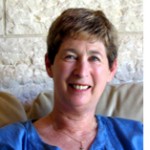By Dorothea Shefer-Vanson

MEVASSERET ZION, Israel — The TV series, Call the Midwife, which is based on Jennifer Worth’s book of that name about her own experiences of working as a midwife in the impoverished East End of post-war London, has aroused widespread interest and enthusiasm, first in Britain and subsequently all over the world. Everybody has been born, of course, but not everyone has been privileged to take part in the miracle of birth. Most women have, of course, whether attended by a midwife or doctor, and some lucky ones even with their husband or partner at their side. But bringing this momentous yet mundane event before a mass audience is a major undertaking.
Because of the time and place in which the series is set, the East End of London after WWII, the producers and directors placed particular emphasis on achieving the authentic feel of the time and place. A book by Heidi Thomas, The Life and Times of ‘Call the Midwife,’ provides some insight into the tremendous lengths that were gone to in order to ensure that this authenticity was attained. Thus, extensive research was undertaken, journals and magazines of the time were studied closely, and clothing, furnishings, household items, cosmetics and even baby clothes were sought in order to match the styles and materials available then. The midwives in the series are associated with a convent, and we are also given a glimpse into the lives of the nuns. The actors – mainly actresses – come across as very authentic characters, and the ‘interviews’ with their characters as that appear in the series indicate how very successfully they have entered into the mindset of the individuals they portray.
In the 1950s, which I remember as a child, England was beginning to emerge from the general constraints and rationing imposed by the Second World War; at the same time the National Health was being introduced. This brought immense benefits, particularly to the poorer segments of the population, radically changing the way medical treatment was provided. The sight of a midwife on her bicycle on her way to attend a home delivery is no longer the norm, as it was then. Home deliveries, often without any form of pain alleviation, which characterized the process of delivery and birth until relatively recently, are now very much a thing of the past, and most babies (at least in the Western world) are born in hospitals.
Childbirth is fraught with many dangers, both to mother and child, and the progress that has been made in so many areas of medical science means that infant mortality rates have dropped all over the world, as have fatalities among puerperal mothers. The TV series shows rigorous adherence to the medical procedures known at the time, with emphasis on maintaining hygiene – no easy matter in the circumstances in which many people lived in the East End.
As well as the advice and help given by the author of the book on which the series was based but who unfortunately died while filming was in progress, the series had the benefit of a resident midwifery consultant, and to this viewer’s unprofessional eye it all seemed very authentic. The book takes the reader behind the scenes, telling us where all those gorgeous newborns came from and how they were handled with the utmost care.
What affected me most was to read that just as I, together with many viewers, was moved to tears in front of the telly when watching each episode, the same emotion gripped the hardened (mostly male) crews working behind the scenes. The miracle of birth is something we take all very much for granted, but every safe delivery of a healthy baby is indeed a miracle, and the TV series has done a great service in reminding us of that.
*
Shefer-Vanson is an author and freelance writer based in the Jerusalem suburb of Mevasseret Zion. You may contact her via dorothea.shefer@sdjewishworld.com